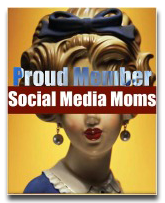Posted by Robin on Oct 23, 2016 in Family | 0 comments
Kids are natural scientists from the day they’re born. Watch a baby and you’ll see surprise in their eyes when something unexpected happens; then they’ll try it again and again to see if they get the same result.
That’s science.
Fast forward a few years and you’ll see kids attempting insane physical feats and then figuring out (sometimes hilariously) why they didn’t work out.
That’s science.
They’ll go through a period where it seems like their only goal in life is to tear things open or take things apart, to see what’s inside or what makes them work.
That’s science, too.
Science is curiosity and experimentation and observation and conclusions and trying again. The scientific process— developing a theory, then testing, testing, testing— is a natural and essential part of childhood; one that should be encouraged and celebrated. Not just to keep the love of science alive through the school years, but because a healthy curiosity and drive to figure things out is a very healthy trait to carry with you your entire life.
But while kids are young, one of the best things about science experiments is that they’re a adult-sanctioned reason to get messy! Here’s a simple, not too messy one for the pint-size scientist in your house to try, from Kitchen Science Lab for Kids: 52 Family Friendly Experiments from Around the House by Liz Lee Heinecke.
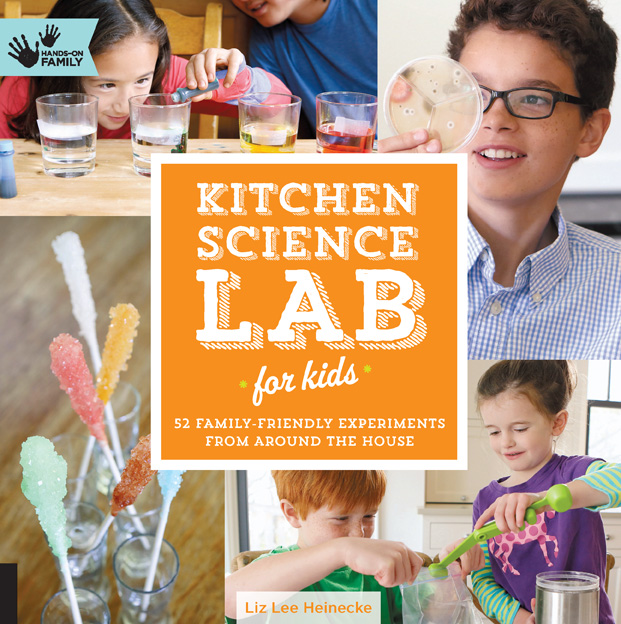
Magic Bag
Do you think a bag of water will leak if you stab it with a sharp stick? Think again.
Materials
- Resealable plastic bag (thick freezer bags work best)
- Water
- Food coloring
- Sharp wooden or
- bamboo skewers
Step 1:
Fill the resealable plastic bag with water.
Step 2:
Add a drop or two of food coloring to the bag and seal it shut.
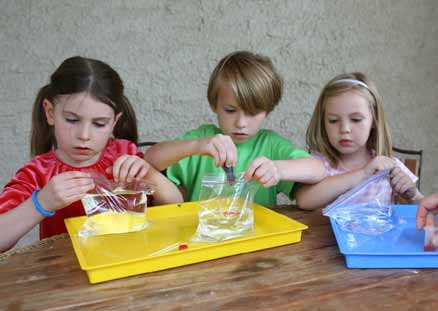
Step 3:
Slowly poke a wooden or bamboo skewer completely through the bag, in one side, through the liquid, and out the other side. Avoid pushing it through the part of the bag containing air.
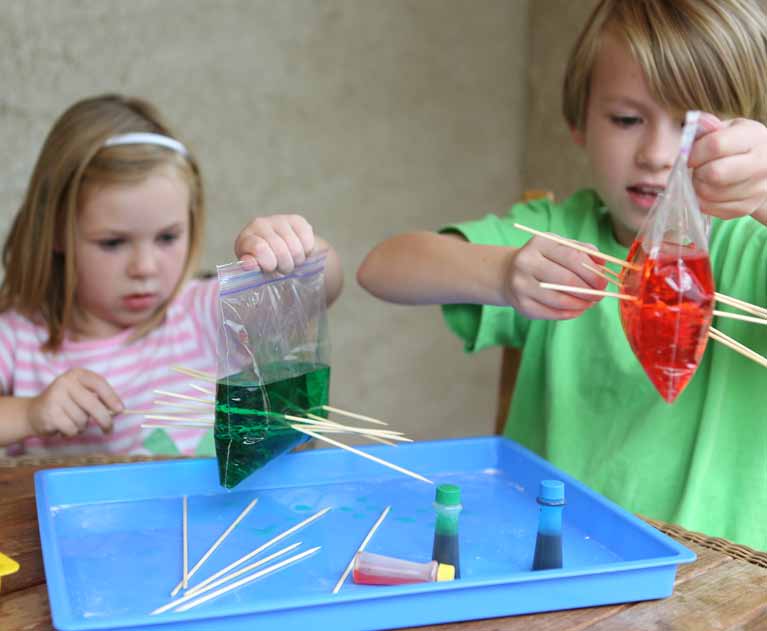
Step 4:
See how many skewers you can push through before the bag leaks.
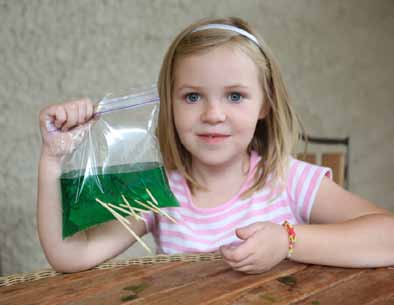
Creative Enrichment
Does this experiment work with other liquids? What if the water is hot, or cold? What happens if you poke one end of your stick through the portion of the bag that contains air?
Safety Tips and Hints
Be careful with the sharp points of the skewers. Small children should be supervised.
This is a good experiment to do outside, over a sink, or over a bowl.
The Science Behind the Fun
Plastic is a polymer, made up of long, elastic molecules that form a seal around the spot where the skewer is poking through. This polymer seal prevents the bag from leaking excessively.

click for enlarged, printable PDF
For more, check out Liz Lee Heinecke’s blog The Kitchen Pantry Scientist, or her newest book Outdoor Science Lab for Kids: 52 Family-Friendly Experiments for the Yard, Garden, Playground, and Park.
You can also find more kid science on these sites:
April Noelle 17-Oct
Happy Healthy Hip Parenting 18-Oct
Mom of 2 Dancers 19-Oct
Just Joanna 20-Oct
Familylicious 21-Oct
Say it, “Rah-shay” 22-Oct
The Life of a Home Mom 24-Oct
Mom, Are We There Yet? 25-Oct
Bless Their Hearts Mom 26-Oct
Central Minnesota Mom 27-Oct
Cassandra M’s Place 28-Oct
My Silly Little Gang 29-Oct
Houseful of Nicholes 30-Oct
Cook with 5 kids 31-Oct
From Kitchen Science Lab for Kids by Liz Lee Heinecke
© 2014 by Quarry Books Text
© 2014 Liz Lee Heinecke Photography
© 2014 Amber Procaccini Photography
read more
Posted by Robin on Aug 18, 2016 in Family, Featured, Finances | 0 comments
We just moved our oldest son into his first apartment, at Temple University in Philadelphia. We were somewhat mentally prepared for the idea of college, but the financial wallop that all those little costs add up to is frankly overwhelming. I’m talking scientific calculators, lab fees, internet connections, trash bags and toilet paper. Pots and pans and paying for the power to use them.
Ugh. And textbooks. Twenty years later and a million technological advances later, how am I still spending so much on textbooks?
Here’s a guest post about how the college textbook industry is still charging you too much for textbooks… and how to work your way around it.
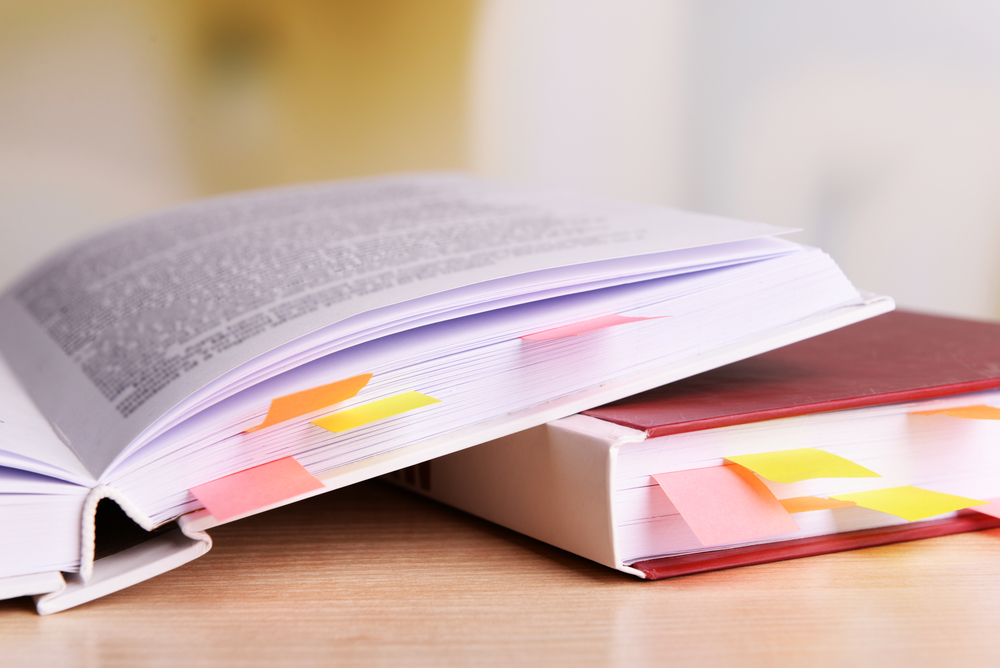
5 Ways to Save on College Textbooks
A recent study by the United States Government Accountability office showed that the average prices for textbooks have risen 82 percent in just 10 years.
Many expected that internet access would help bring costs down, but the college textbook industry appears to be keeping students from saving money by using such tactics as college specific books, book bundling and eTextbooks, all of which raise prices.
Luckily there is something you can do about it. You just need to do a little homework before classes start.
“There are many ways you can save when buying textbooks that the college textbook industry doesn’t want you to know about,” says Chris Manns of the price comparison websites CheapestTextbooks.com and TextbookRentals.com. Both free services help students locate the cheapest prices for millions of books.
Here’s his list of the ways the college textbook industry gets you to pay more, and some tips for paying less:
College Specific Books:
Colleges have started asking students to buy college specific books. They take a commonly used textbook and have it printed with the college name and course number on the cover. This gives the book a new ISBN (International Standard Book Number) that is typically only available at the college it was made for.
The workaround:
Ask the professor if it’s OK to use the book’s common version. “The common version will be available online and, in almost all cases, be much cheaper and apart from the cover, it’ll be the exact same. When you rent or buy it online, you’ll be able to rent or buy it used from anybody,” Manns says.
Book Bundling:
Students are sometimes required to buy a “book bundle” with extra class materials that add to the cost. “These bundles often include items the professors aren’t even using,” Manns says.
The workaround:
Email the professor or wait until the class starts and ask if the professor will be using the supplemental material. “If the answer is no, then buy just the textbook online,” Manns says.
New Editions:
“This problem has been around a long time,” Manns says. Publishers release new versions of books every few years, even though little changes.
The workaround:
Usually, buying an older edition gives you the information you need. Older editions often cost less than $25.
eTextbooks:
eTextbooks are usually more expensive than buying a book used or renting it, and they typically expire after six months or a year.
The workaround:
Shop around. Most eTextbooks are available from multiple sellers. If you have the option, go old-school and buy the hard cover or paperback, which will typically be much cheaper. “That way you can keep it if you want, or you can sell it later,” he says.
Access Codes:
The college-textbook industry has found a way to try and force students to buy new textbooks.Sometimes they add access codes so the student can use online material in conjunction with the textbook.These codes are usually only able to be used once.
The workaround:
Publishers typically sell access codes for their textbooks on their websites and savvy students sell them online after they’ve bought them with a bundle and didn’t use them. First, ask the professor if the class requires the access codes for the online material (sometimes they don’t). If they do, go online to a textbook price comparison site and find them using the name of the course or ISBN number for the access codes. If you can’t buy the access codes that way, then go to the publisher’s website and see how much it is to buy just the access codes. Buying separately and also renting or buying the textbook used will usually still be much cheaper than buying the textbook new with the access codes.
Chris Manns is the managing director of the price-comparison websites CheapestTextbooks.com and TextbookRentals.com. He’s been in the business of helping students find the cheapest prices for their textbooks since 2001.
read more
I received an email today that had the subject line: Does Reading Matter?
And I got all hot and bothered about it because yes, of course reading matters. It matters a lot. Trust me, I haz opinions on this subject.
Turns out, the email’s author has opinions on the matter too, and sent me a lovely article outlining them. It’s well worth your time, with some fresh reading recommendations in there, to keep you occupied while I gather my own feverishly opinionated post together.
(First, feast your eyes on this photo of Cass reading back in 2011, when she was 7. Be still my beating heart; where’d my little girl go?)
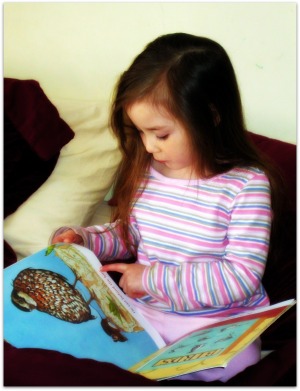
Does Reading Matter?
By Chantal Jauvin
With April upon us, thousands of families are starting to negotiate what they will do for their summer vacations. The stakes are high: Wi-Fi or not? Together or separately? Away camps or day camps? Parents, children, couples, relatives and friends, vying to create their perfect version of a summer holiday.
The choices have multiplied to such an extent that the option of simply dropping by the local library to pick up a stack of books for the cottage, the park or the backyard seems a distant memory. People bemoan their lack of time to read. The reasons are endless: work, chauffeuring the kids, barely enough time for yoga, tax season, too much time looking at the computer screen, and the new season of House of Cards. In other words, life gets in the way of reading.
So, why do we shortchange our reading time? Does reading still matter?
Most people would agree that being able to read matters. Yet as many as 32 million adults in the U.S. cannot, according to the U.S. Department of Education figures from December 2015. But there is an even more alarming statistic: 19% of high school students graduate without being able to read. These statistics raise some alarming questions: Do we have enough jobs to employ so many illiterate people? Will those jobs pay sufficiently to keep them out of poverty?
If we stretch our vision to look at the state of global literacy, the same research found that 775 million people around the world cannot read. Because some cultures still place less value on girl’s formal education while their brothers are encouraged to attend school, females account for 66% of that number. Whether at home or abroad, the ramifications of illiteracy are obvious: poverty, social exclusion and limited access to medical care.
The statistics can be argued with, reframed or countered. The simple fact remains: illiteracy severely limits quality of life both in economic terms and in the possibilities of enjoyment. Parents, advocates, government officials, students may not agree on how to fix the problem, but everyone agrees that the ability to read beyond a basic level is crucial.
Americans spend 2 hours and 46 minutes out of each day watching television. Young adults between the ages of 15 and 19 spend only 4.2 minutes per day reading during weekends and holidays (excluding homework-related reading). Reading habits increase only marginally later in life. Americans ages 45 to 54 engage in leisure reading only 26.4 minutes a day, (American Time Use Survey, 2013).
If we agree about the importance of reading, why do spend so little time enjoying it? The reasons vary by person, but perhaps the root cause has more to do with our cost-benefit analysis of the use of our time. A regular workout regime, say 3 times a week, 45 minutes each session, provides a tangible result. Reading’s benefits are less obvious.
Huffington Post has taken a look at the science behind reading and offers us concrete reasons to read more often. “6 Science-Backed Reasons to Go Read a Book Right Now” include:
- Stress reduction: It takes only 6 minutes of reading to begin lowering your stress level.
- Longer-lasting memory function: People who start to read early and continue to do so throughout their lives experience slower memory decline.
- Better sleep: Sleep experts recommend reading before bed to improve the quality of sleep.
Science aside, there are some other compelling reasons to read more often.
1. To learn from history.
Reading historical fiction provides insights into our past. Reading about Queen Isabella’s rule in Spain through the eyes of author C.W. Gortner in The Queen’s Vow provides a compelling way to understand the events and personalities who ruled this country in this period.
2. To prepare for action.
In this age of instant gratification, books are our 24-hour-a-day teachers. They are available to help us plan a trip, learn a new skill or face a personal challenge. They provide privacy to test ourselves by taking self-help quizzes or improving the way we face life. Consider Amy Cuddy’s new book Presence: Bringing your Boldest Self to your Biggest Challenges.
3. To boost imagination and creativity.
A book can provide a different perspective on life. Lee Miller: A Life by Carolyn Burke challenges the reader to see the world through the lens and life of a talented photographer. People who suffer from isolation often find solace when they encounter a character who shares their values and experiences. This affirmation validates their views and often spurs their creativity.
4. To increase our empathy.
Our world faces constant challenges requiring us to empathize with people facing situations we ourselves have not encountered. That Bird Has My Wings by Jarvis Jay Masters depicts the journey of a man on death row. Books bridge the gap between situations unknown to us and universal themes of our human condition: struggles with faith, self-forgiveness and judgment of others.
5. To be a responsible citizen of the world.
Margaret Atwood explains this best: “Reading and writing, like everything else, improve with practice. And, of course, if there are no young readers and writers, there will shortly be no older ones. Literacy will be dead, and democracy – which many believe goes hand in hand with it – will be dead as well.”
It’s always the right time to do something good for your health, your mind, your soul. But summer is an especially opportune occasion, which provides us more open space in our lives. Fill that space with something that matters; have a summer fling with reading, and see where it goes.
Chantal Jauvin is an international attorney who has combined her passion for experiencing other cultures with her pursuit of a global legal career. She has lived in Japan, Mexico, Cambodia, Russia, Austria, taking shorter assignments in Vietnam while pursuing her MBA studies in the UK. She has negotiated in Paris, Buenos Aires, and Sao Paulo often enough to almost call these cities home. Igniting her lifelong enthusiasm for language and other societies, she has turned her attention to writing in her quest to understand how our souls are touched by the blended world in which we live. Jauvin currently resides with her husband in Philadelphia, Pennsylvania.
Her new book The Boy with a Bamboo Heart tells the story of a street orphan who created a children’s charity called FORDEC. The book can be purchased on Amazon and ChantalJauvin.com
Connect with Chantal Jauvin on LinkedIn, Facebook , and on her website, http://chantaljauvin.com/. For more information on FORDEC, please visit http://fordecusa.org/.
read more
Posted by Robin on Apr 6, 2016 in Books, Family | 0 comments
My favorite gifts for young kids and baby showers (and really most other gift giving occasions, if I’m being honest) are books. The classics, to be sure, but I also try to rustle up some new titles that I think the recipient is unlikely to receive from any other quarter.
My First Science Textbooks are chemistry storybooks for the very young, written by a chemistry teacher with his two-year-old daughter in mind.
I love love love this.
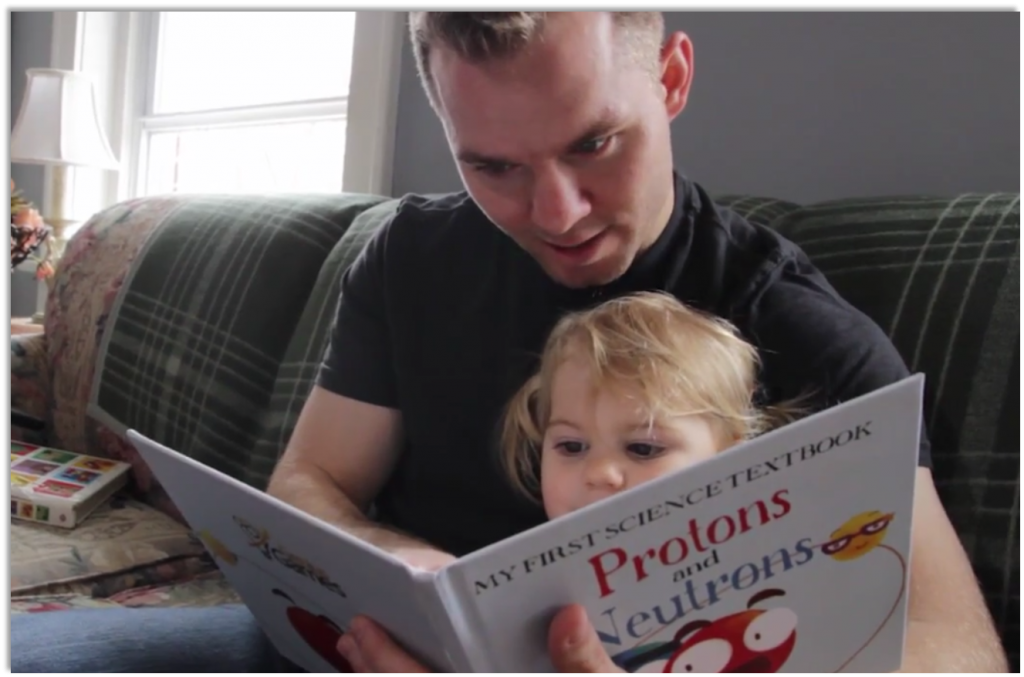
Book I: Protons and Neutrons
Book II: Electrons
Book III: The Atom
My First Chemistry Textbooks are hardcover children’s books, each with 32 or more full color paper pages. Our goal is to add a few additional workbook pages at the end of the books so adults and kids can play, interact and discuss the content covered throughout the books.
This is at the Kickstarter stage at the moment, but it fully funded within 8 hours! The initial fundraising goal was $4500 and they’re close to $100,000 now. Which is AMAZING.
For $35, you can reserve one copy each of the three books in the series plus access to the E-book versions. For $36 you get them in board book form.
For $65, you get one each in hardback form and one each in board book form. Think of it as the “grow with me” edition.
For $100, you get FOUR board book copies of each title plus access to the E-book versions, so you can donate to your classroom or library AND give away copies at your next baby shower or little kid birthday.
There are other donation levels available, those are just my favorites.
Check it out and reserve your copies now! Estimated delivery is October 2016.
read more
Not hyperbole, and given some of the truly uncalled-for things that have happened to me over 39 years, that’s saying quite a lot.
(I originally had a list of the top 5 until-this-point occurrences, but damn, that made for some depressing reading. Let’s say that the look of pity in the funeral home employee’s eyes as he clarified, “This check pays off the balance of your father’s funeral, and this one is a deposit on your mother’s?” was only at number 5, and leave it at that.)
I read a lot of personal development books, or self help books, whatever you want to call them. And nearly all of them, while the author recounts their own experience, references a moment on which their whole outlook, their whole life, hinges. A moment that separates your life into before and after.
Rock bottom. Now I can say I’ve been there, done that.
For me that moment came in early September. First I noticed that my oldest son, Jake, was 15 minutes past curfew on a Friday night. Then I was livid at 30 minutes past curfew. I went to get my phone, sitting on the charger in my bedroom.
Several numbers had called earlier in the evening. None that I recognized. None that had left a message. It left me on edge, but I reasoned that if anything was amiss they’d have called back or left messages. If anything, it was probably Jake calling on a friend’s phone, preemptively offering up an excuse for his breaking curfew, reminding me that he needed a new phone as his battery didn’t last very long anymore.
At an hour past curfew I started to panic. I started texting his friends. They didn’t know where he was; they’d been trying to get hold of him themselves. They checked in with other friends, friends I didn’t know.
90 minutes past curfew and I had officially lost my mind with worry.
At 12:45, nearly a full two hours past curfew, I answered a phone call letting me know Jake had been taken to the ER and was put me on hold so that the hospital could officially take my permission for treatment.
Those minutes— it was probably only two or three, but it felt like a lifetime, as I ran to wake my husband up, the fear in my voice jolting him awake and scaring myself even more. Those minutes were the hinge my life swung upon.

Jake is OK. He was in a head on collision going 40mph; his organic chemistry textbook clocked him on the back of the head as the airbag opened. Aside from some bruising, some staples to the back of his head, a car that didn’t make it and a total blank where memories of the accident should be, he is fine.
As we arrived at the hospital, though, we didn’t know that. We didn’t know anything. They had wheeled him away for a CAT scan and again, we waited for what seemed like forever. Plenty of time for worst case scenarios. Lots of time to worry about the state of the other driver, to think about their spouse or child or mother waiting, willing their phone to ring. Too much time to think about our bank account, already shot to hell from months of unemployment and the cost of buying the car in the first place.
I’d already been fighting the slow slide into depression, and the week before this happened was particularly bad. I’d felt like I was waiting for something terrible to happen. I felt like I had somehow willed this into happening.
I cannot explain in words what it felt like to see my baby boy wheeled in, his head wrapped in gauze, a cone around his neck, his ridiculous ripped up sneakers he insists on wearing sticking out from underneath a sheet.
Jeff kept trying to talk to me, and all I could do was stare at him. I don’t deal well with the sounds of the ER anymore, and he was asking me to stop putting my head between my knees, where I could block out the sound; to stop rocking, to stop pacing. I didn’t know how to tell him if I stopped moving I’d start shaking. I didn’t know how to let him know that if I spoke, I’d start crying, and if I started crying, I might start screaming.
I knew how this works, when the panic fully takes hold. I’ve been there before.
But then we got to take my boy, my baby boy, home, at 5am. I wanted him to sleep on the couch on the living room, where I could keep an eye on him. I didn’t want him out of my sight ever again. I couldn’t sleep. I mentally checked out for days, broken by the idea that we could have lost him, and thanked the gods for my husband who took care of our other kids, of all the calls and questions I couldn’t deal with.
And all I can do now is be grateful. Grateful that there hadn’t been another car on the crossroads, that the airbag on a 98 Civic had been in good condition, that the other driver was unhurt, grateful that my son will be home again in a few hours, embarrassed by having to take the bus but oh well.
And my heart goes out to all the parents that don’t receive such an outcome in just a few hours. That have to spend days, weeks, months listening to the beeps of a hospital room, that await diagnoses, that live with uncertainty and anxiety, that struggle to keep their child’s (and their own) spirits optimistic.
This is the part where I ask you a favor
My CrossFit box has been my anchor the last few years whenever the overwhelming sadness and anxiety closes in. Not only as a place where I get those endorphins pumping, but as a place that I feel secure and welcome in, and that has introduced me to many new friends. They are good people.

CrossFit Riverfront is hosting a fundraiser this Saturday to benefit A.I. DuPont Children’s Hospital, in the name of the Esmond family. If you’re local, you’ve heard this story: while on vacation in the Virgin Islands, the Esmonds were exposed to a neurotoxin via pesticide spray. Mr. Esmond was an official at Tatnall, the Esmond boys promising lacrosse players. They were— are— members of our CrossFit family, but Mr. Esmond and the boys are no longer capable of even simple physical functions. Mrs. Esmond received the least exposure and has recovered most fully, and of course spends her days and nights with her boys at A.I.
I’ve spent my fair share of time at A.I. DuPont; again, with Jake, when he was younger. He’s had his time in intensive care, as an inpatient, as an outpatient. He’s had tests and appointments with specialists.
My father-in-law works there, helping to give voices to the deaf. (That’s a huge understatement.)
The staff there is wonderful. So much thought has gone into making the experience bearable, comfortable, less frightening. Every attempt is made to make sure the parents understand what is happening, what their options are. Children are spoken to, not around. We are hugely fortunate to have it nearby.
Oh. Right. That favor
I’d love for you to donate to our #EsmondStrong fundraiser and support A.I. DuPont Hospital, which does so much to support children and their families, and research like my FIL does. If you’ve ever experienced the heartache of seeing your child in a hospital bed, I’d really appreciate if you’d also share the link to the fundraiser with others.
In the name of the Esmonds, with me and Jake in mind.
For the kids, and for the parents sitting by their bedside, ready to hear some good news.
And please, love on your loved ones today and every day; hug them tight. You never know when your life will turn on a hinge.

You can donate directly on the fundraiser page (every dollar counts! No donation too small), or you can come check out the event on Saturday from 10-2 at the box. WODs will begin in multiple heats soon after the 10:00 mark so that everyone can get a workout in. Raffle tickets will be sold for $5 a pop for awesome prize baskets sponsored by Hylete, Reebok, Caveman Coffee and lots more; Kettlebell Kitchen will be there cooking up food for everyone.
It’s a opportunity to see what CrossFit is all about: community, and accomplishing so much more than you ever expected.
read more
Posted by Robin on Jul 1, 2015 in Family | 0 comments
Look, I love to ooh and ahhh over fireworks as much as anyone (actually, probably more; I’m a very enthusiastic pyrotechnics admirer). But I’ve met entirely too many people missing fingers in my lifetime, so here’s a quick fireworks safety PSA ahead of the holiday weekend.
It seems obvious to say, but here’s your reminder: fireworks can be dangerous— especially for kids, people with long hair, and those who maybe had a Yuengling or two or five along with their BBQ. Even sparklers can reach temps above 2000 degrees Fahrenheit.
Last year over 10,000 people were treated for fireworks injuries in the US, and two thirds of those happened within a month from July 4th.
29% of those injured were kids under the age of 15. Adult supervision isn’t enough to evade danger, either: half of reported injuries happened while an adult was supervising. Your best option is to go watch a professional display, but even then be careful if it’s a small show in relatively close quarters (I once saw a man’s jacket catch a spark and ignite during a fireworks show at a festival).
Doctors in the Comprehensive Injury Center at Cincinnati Children’s, the American Academy of Pediatrics, and the U.S. Consumer Product Safety Commission give the following tips on fireworks safety via Newswise:
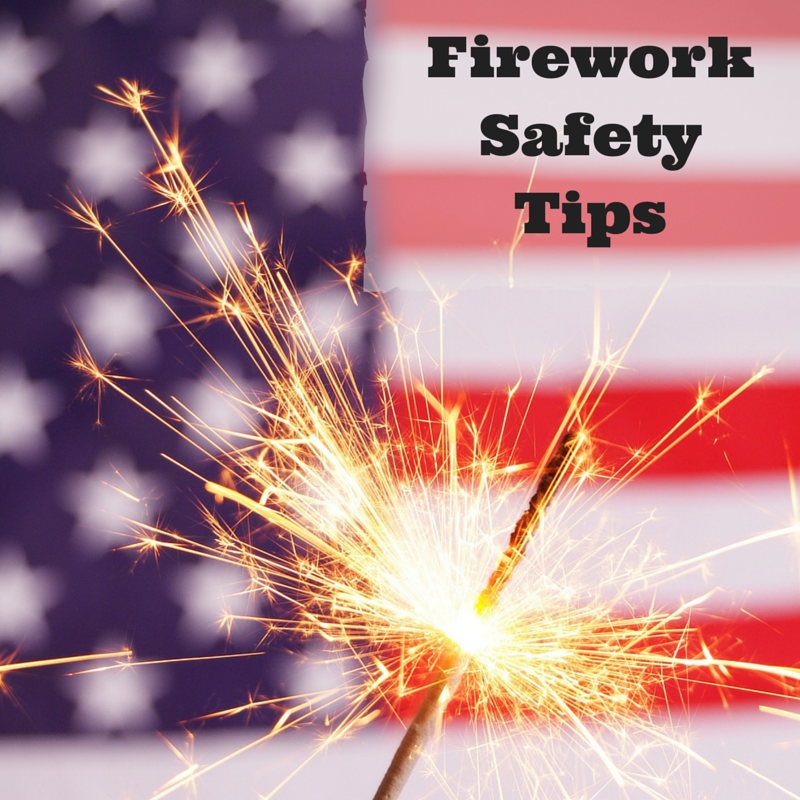
FIREWORK SAFETY TIPS
- Observe all local laws
- Never allow children to play with or light fireworks, even sparklers
- Older children who decide to use fireworks should always be supervised by an adult
- Only buy from reliable sellers
- Avoid buying fireworks packaged in brown paper, often a sign that the fireworks were made for professional displays
- Use fireworks outdoors only
- Always read and follow all warnings and label instructions
- Be sure other people are out of range before lighting fireworks
- Only light fireworks on a smooth, flat surface away from the house, dry leaves and grass, and other things that may catch on fire
- Never try to relight “dud” fireworks that have not fully functioned
- Keep water handy (a garden hose and a bucket) in case of a malfunction or a fire
- Never experiment or make your own fireworks
- Light only one firework at a time
- Dispose of fireworks properly by soaking them in water and then disposing of them in your trashcan (wait 15 to 20 minutes and then soak it in a bucket of water)
- Never light fireworks in glass or metal containers
- Never throw or point fireworks at other people, animals, or buildings that can catch on fire
- Never carry fireworks in your pocket
- The lighter of the fireworks should always wear eye and ear protection and never have any part of the body over the fireworks
- Stay away from illegal explosives
- Use long match sticks to light the fireworks, not lighters or cigarettes
- Never shorten or lengthen the fuse
- Families should attend professional fireworks displays rather than using fireworks at home.
- The AAP recommends prohibiting public sale of all fireworks, including those by mail or Internet.
Do you go to a fireworks show for the 4th or do you DIY at home?
Stock photos from depositphoto.
read more

















